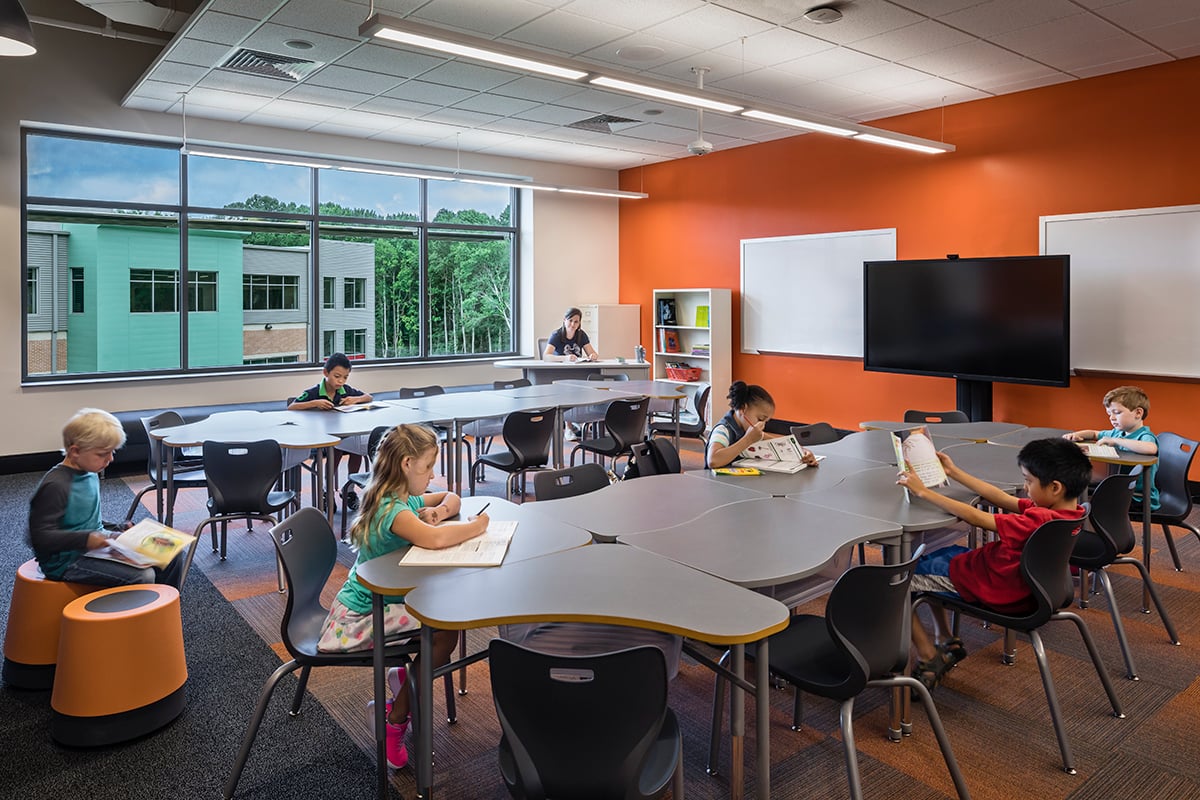Flexible Seating in Schools & Why It's Crucial for Classroom Setup
In the last 10 years, the concept of flexible seating has blown up in the school furniture community. There’s plenty of discussion about the value of having flexible seating in the classroom environment, including an emphasis on the psychological effects (choice, ownership, and perception of design and color), the physiological effects (comfort, movement, oxygen/blood flow core strength, sensory input), and the sociological effects (collaboration, interpersonal skills, and communication).
This is part of Artcobell's "Flexible Furniture" series.
- How Flexible Classroom Furniture Reinvents Learning
- Flexible Seating in Schools & Why It's Crucial for Classroom Setup
- The Living Classroom: Elements of a Flexible Learning Environment
- Connecting the Dots in the Classroom with Flexible Furniture
While actual research on flexible seating is limited, the evaluation of case studies, perception papers, and budding research show promise that flexible seating as a part of your classroom setup can have a direct impact on student achievement.
Most commentary defines flexible seating as letting students pick where they sit. For our discussions, I've expanded this definition to include what they sit in and when they sit there.
Features of Effective Flexible Seating in Classrooms
So how do we address flexible seating in classrooms? Let’s take a quick look at the office industry where there is extensive research on how the human body—seated correctly—can impact productivity, mood, and overall wellness of an employee.
There are at least 5 important features that should be adjustable in an ergonomic office chair (2015, Summerhills):
- lumbar support
- arm width and height
- seat back width and height
- seat and back angle
- tension control
Photo credit: http://ergonomictrends.com/what-is-an-ergonomic-chair/
Office vs. Classroom Seating: What’s the Difference?
The office furniture world makes a strong case that it is critical to have proper seating for employees. So, why can’t we apply the office furniture research to classroom furniture design? There’s a big difference between offices and employees and classrooms and students. In an office setting, we usually have one person sitting most of the day in one chair, in one space, and using a chair that can be set for that one person. Essentially, seating can be personalized.
Classrooms don’t operate like office spaces. Research proves that it isn’t practical to design classroom furniture that fits all students because their growing bodies are different in size and shape within the same classroom group. (2014, Hoque) Moreover, students change from classroom to classroom in each academic session, and they don’t take their chairs with them!

For years, school furniture has been designed for efficiency and low cost, and with little regard for student development. That must change! In order to best help our students academically, emotionally, and physically, we must address comfort, movement, and a sense of security when it comes to classroom seating. Simply put, schools must provide students with options, or flexible seating arrangements.
Related Article: How the Right Learning Environment Can Impact Student Success
Benefits of Flexible Seating: A First-Hand Account
After many years in the classroom, I’ve observed that providing choice increases engagement, promotes ownership, and reduces classroom behavior issues. My concerns arise over what furniture is being used in classroom setups, the purpose for different types of seating, and how we teach students to select the correct seating option.
For more valuable tips on selecting the right flexible seating to enhance your classroom setup or to dig deeper into the benefits of flexible seating, take a look at this white paper.
Summerhills, Ellen, and View Blog. “Ergonomic Office Chair: 5 Important Features to Consider.” Recruitingblogs.Com, 26 Aug. 2015, recruitingblogs.com/profiles/blogs/ergonomic-office-chair-5-important-features-to-consider. Accessed 20 July 2020.
Hoque, A.S.M., et al. “Ergonomic Design of Classroom Furniture for University Students of Bangladesh.” Journal of Industrial and Production Engineering, vol. 31, no. 5, 4 July 2014, pp. 239–252, pdfs.semanticscholar.org/306d/f7a97c162abb70c0749a7b92473f4536ee0d.pdf, 10.1080/21681015.2014.940069. Accessed 13 July 2020.
Recent Posts
In part one of our series on thoughtful classroom design, we heard an educator’s perspective on...
In part one of our series on thoughtful classroom design, we heard an educator’s perspective on...

